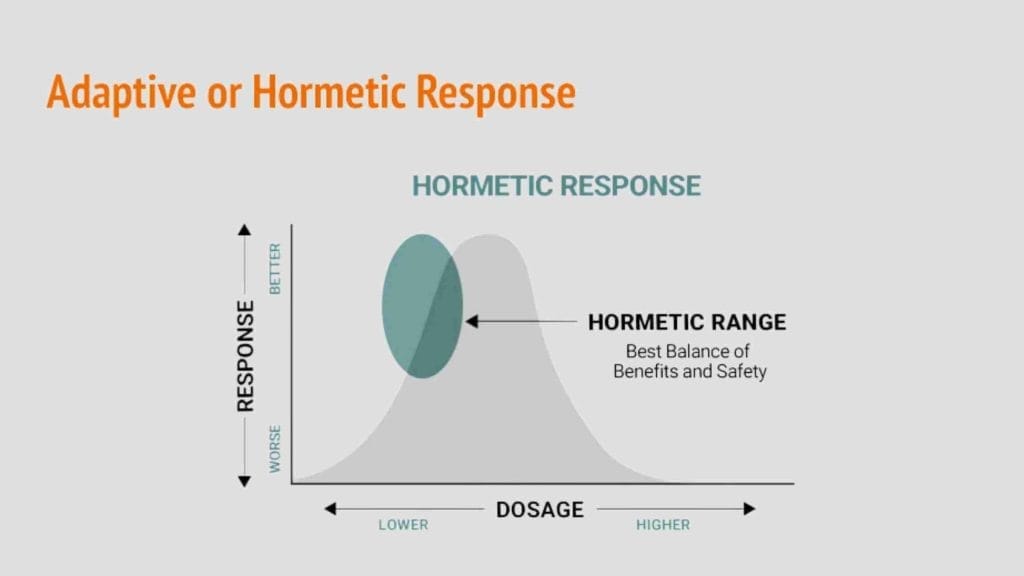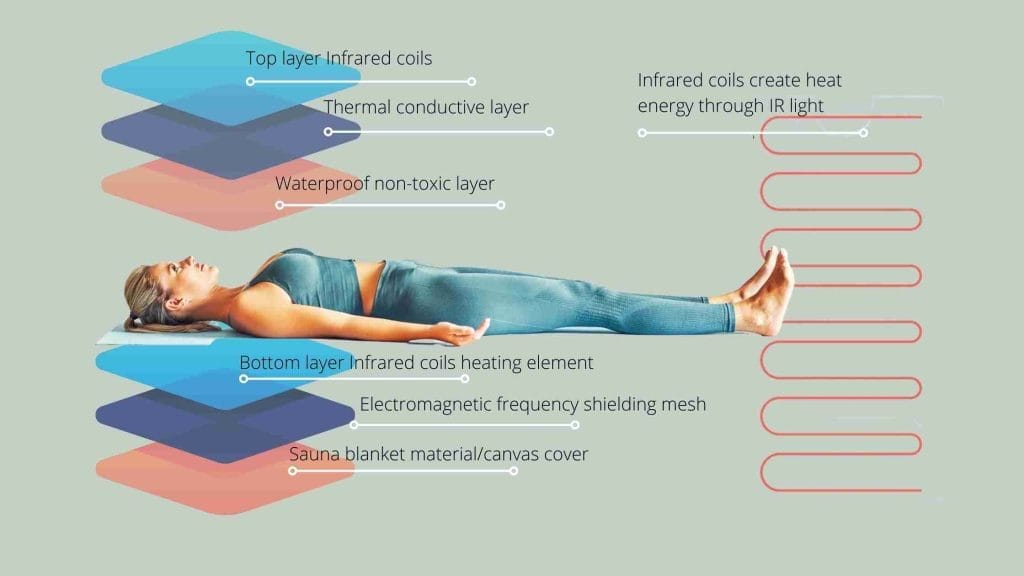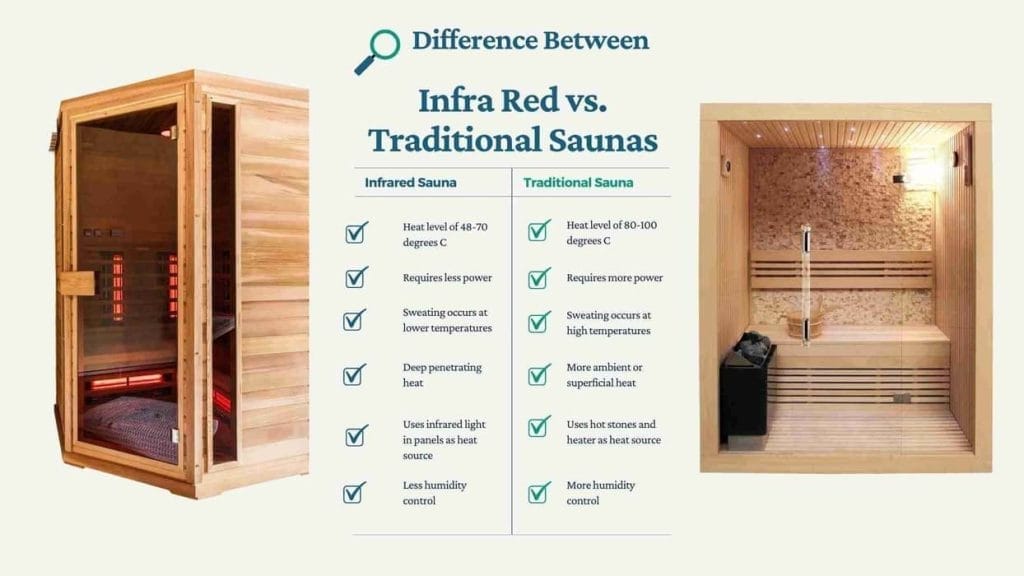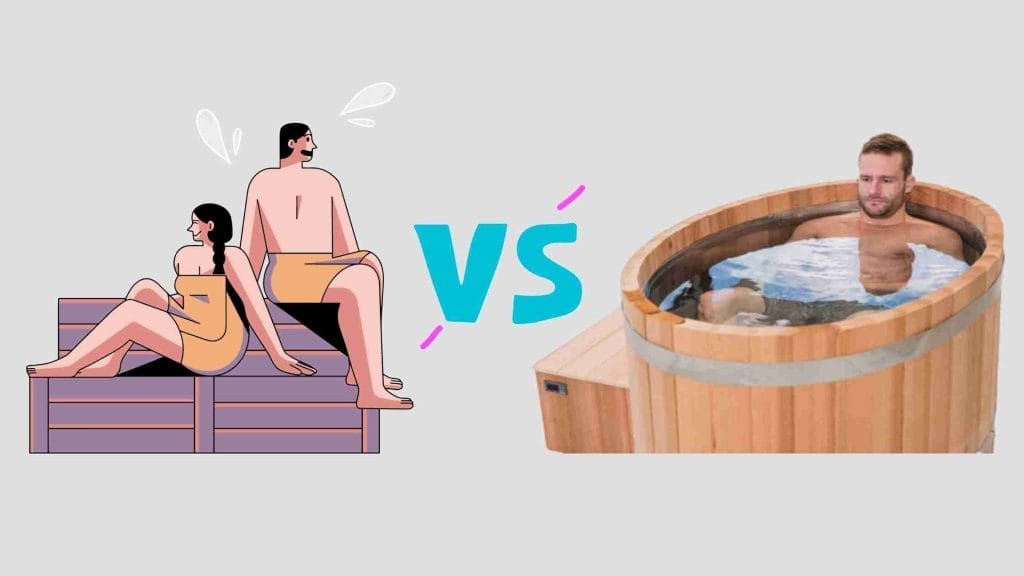The Benefits of Sauna, Sauna Blankets and Heat Therapy For Injury Recovery
We include links to products we think are useful for our readers. If you click and buy a product through one of the affiliate links on this page, we may earn a small commission.

Whether steam, traditional, or infrared, we shed light on the main benefits of heat therapy for athletes and average joes
Mimicking the effects of exercise by heating the body is practice that many people enjoy. The interesting past time of deliberately stressing the body out of a natural intelligence and awareness of its benefits is one that has further exploded in popularity, between both ice baths and saunas, as a greater focus on their health benefits arises.
Capitalising on heat therapy from of an infrared sauna, sauna blanket, steam sauna or Finnish sauna may be your best solution to improving your recovery time from your latest run, cycle, gym session or sore, stiff muscles and may also help improve sleep, mental health, boost immunity, skin health and affect weight loss.
Saunas is a topic of conversation that is hit on regularly and in-depth in many popular forums like the Joe Rogan experience, the Huberman Lab podcast by Andrew Huberman, Ben Greenfield podcasts, various Youtube videos of Dr. Rhonda Patrick, and thousands of related posts from supporters and users on Instagram and Tiktok.
Heat therapy is one of the oldest and most natural methods of healing and has history in Finland, Japan and other countries that have had a huge sauna culture for centuries. Sauna has been used for centuries to relieve pain, inflammation, relaxation, for longevity and for promoting optimal health. Today, heat therapy, in the form of infrared saunas, Finnish saunas, dome saunas, infrared sauna blankets and other heating devices, has evolved as a popular recovery tool by athletes and fitness enthusiasts around the world.
While heat therapy remains a controversial recovery tool – along with its counterpart, cold therapy – there is no doubt that this tried and tested technique has aided the recovery of millions of athletes across generations.
Let’s take an in-depth look at the benefits of saunas, sauna blankets, and heat therapy for injury recovery and how you can and should be using it as a reliable form of both recovery and athletic performance.
What is Heat Therapy?

Heat therapy, also known as thermotherapy, is the use of heat to treat medical conditions. Through the application of “superficial heat,” thermotherapy is capable of increasing soft tissue extensibility, reducing pain, improving circulation, and accelerating healing.
Heat therapies have proven effective for treating a variety of conditions, such as muscle pain and stiffness, joint pain, arthritis, menstrual cramps, and tension headaches.
Thermal therapy is believed to be able to increase blood flow through vasodilation, the process by which blood vessels in your body expand. In turn, this has the potential to lower blood pressure.
Heat stress from taking a sauna or lying in a sauna blanket can produce heat shock, which is scientifically proven to produce shock proteins that benefit cell health and immunity.
The Science of Heat Therapy

Heat Therapy produces an adaptive response
In a person’s body, there are nerve cells called thermo-receptors that detect temperature changes in the environment and trigger vasodilation when the temperature rises.
As a result, there is a decrease in the firing rate of alpha motor neurons which may cause muscle contraction and increases metabolic activity by supplying tissues with more oxygen.
There are several ways to apply heat to the body, with dry heat and moist heat being the most common types. A dry heat therapy procedure includes heating pads, heating wraps, and lamps. A moist heat therapy procedure involves using saunas and sauna blankets, among other methods.
According to research, moist heat therapies penetrate deep tissue faster than dry heat, resulting in faster pain relief and more reduced tissue damage after exercise delayed onset of muscle soreness (DOMS).
What Does a Sauna Do?
Most people think of a sauna as a place to sweat, but what does it do for your body? A sauna session can last anywhere from five minutes to an hour, and during that time your body is working hard to regulate its temperature.
As an ancient tradition that began in Finland over 2,000 years ago, the sauna goes way back as a place to cleanse the body and mind, and soon became a popular way to relax and socialise. Today, saunas are enjoyed all over the world for their many health benefits.
While saunas have long been used as a way to relax and rejuvenate the body, they can also be beneficial for workout recovery. When you exercise, you cause microscopic damage to your muscles, and this damage is what leads to soreness and fatigue after a workout.
The good news is that as these small tears heal; they get stronger and prepare the muscles for more exercise in the future. In severe cases of muscle pain, it may take days to heal, but saunas can help to speed up the healing process.
What are the Benefits of Saunas?
When you step into a sauna, the heat from the steam, rocks or infrared panels begins to raise your core temperature. Your body responds by releasing sweat, increasing heart rate, releasing hormones, producing shock proteins and increasing breathing rate. But saunas do more than that.
In Finland, sauna is not a luxury – it is a necessity and a lifestyle. Around the world, the sauna scene is increasing, with more people investing in a sauna for home or using saunas at wellness spaces and recovery centres from Australia to the USA. The Finns believe that regular visits to the sauna can help you stay healthy, and they’re right; according to science there are many health advantages to be had by using a sauna and producing that heat stress on body.
Sauna for Performance and Injury Recovery

Sauna increases blood flow through vasodilation
Sauna has been shown to improve healing timelines for various injuries, including muscle strains and bruises. Most people prefer a sauna temperature of around 176-194℉ (80-90°C). In these temperatures, the body will begin to perspire and will be able to work its magic.
As a result of the sauna’s heat, the heart rate and blood flow increase. This helps to improve blood circulation while delivering oxygen and other nutrients to the injured area. Improved circulation through sauna can also assist in relaxing muscles and releasing tension to reduce inflammation and pain.
Increased blood flow not only supplies the muscle with a fresh supply of oxygen and blood but also removes waste from the muscle to the kidneys. As a result of better waste management, recovery times are faster, soreness is lessened after a workout, and tissue health is improved.
The athletic benefits of heat therapy related to sweating it out in a sauna are no longer a secret. Many of these benefits work synergistically to improve markers related to athletic performance and endurance like human growth hormone and testosterone levels to heat acclimation and increased blood flow.
Heat Acclimation
One of the functions of sauna therapy that many athletes deliberately aim for and many other average punters ignorantly experience the benefits of is acclimatising the body to increased levels of heat – heat acclimation. This process involves and increase in plasma volume, increases in red blood cell count and is characterised by improved blood flow overall, thanks to vasodilation.
Because of this vasodilation, or the widening of the capillaries for increased blood flow, an important adaptation occurs that results in improved oxygen delivery to the muscles that you have just worked to the bone, a reduction in heart rate and a lower strain on the cardiovascular system. All of these effects ultimately cause an improvement in the strength of the cardiovascular system and result in a more resilient endurance system.
In fact, this feature of heat acclimation improving endurance was presented in a study of long distance runners that showed how three weeks of post-exercise sauna produced a 32 percent improvement in running endurance, measured by time to exhaustion. In elite sports or otherwise, such an increase shows the dramatic effect saunas can have on the body in terms of recovery and performance.
Sauna for Improved Heart Health
One of the main ways that saunas improve heart health is by reducing blood pressure. Saunas cause the body to release heat, and this heat causes the blood vessels to dilate.
This dilation lowers blood pressure, and it can also help improve circulation. When the blood vessels are dilated, more blood can flow through them, which reduces the risk of clotting and stroke.
Frequent sauna baths have been shown to reduce the risk of cardiovascular disease (CVD), such as heart attacks and strokes, as well as overall mortality.
According to a Finland Kuopio Ischaemic Heart Disease (KIHD) study that enrolled 1,688 participants, those participants who were regularly using saunas four to seven times a week had the lowest CVD-related mortality rate.
The study concluded that:
“Heat therapy has proven beneficial to numerous systems within our bodies for a variety of reasons. In fact, the reason one develops a fever is that heat allows the body to better fight the infection.”
Ultimately, saunas can be a great way to improve heart health. They can lower blood pressure, improve circulation, and reduce the risk of heart attack and stroke, thus improving overall heart health and increasing longevity.
Sauna for Stress Relief
Interestingly, saunas are controversial in the medical field. Opponents claim that they could be the result of selection bias, in which fit people who exercise regularly may just happen to use saunas more often than people who don’t. The debate continues to this day, but there is some evidence to suggest that saunas are effective at improving one’s health.
Generally speaking, the heat released in a sauna can help dilate blood vessels and increase circulation, which helps remove these toxins from your body. The heat then helps to relax your muscles and delivers a small amount of stress relief.
During sauna sessions, you may experience feelings of relaxation and well-being as a result of an increased level of endorphins and other circulating hormones. Pain-relieving chemicals such as this are effective in reducing pain and emotional stress.
Taking a sauna has benefits similar to those produced by physical activity. That said, physical activity and sauna bathing might together benefit mental health more than either activity alone.
What is a Sauna Blanket?

What is a sauna blanket?
A sauna blanket is a portable sauna that wraps around your body; it works like an infrared sauna, where infrared rays directly heat the body. Except for those few differences, sauna blankets work similarly to physical infrared saunas.
There are many reasons people might prefer a sauna blanket to a physical sauna. For one, sauna blankets are portable, meaning they can be used anywhere you have access to an electrical outlet. They’re also much more affordable than traditional saunas, and some models even come with built-in heaters.
Additionally, sauna blankets offer a more personal experience than a traditional sauna, and many people find them more comfortable. Sauna blankets are ultimately easier to use and require less setup time than traditional saunas and can be used in more compact spaces at-home and are a more suitable option for heat therapy you can travel with.
A sauna blanket can simply be rolled out onto your bed, couch or bedroom floor and is not much larger than the average body size. The sauna blankets work by heating up the inside of the ‘blanket’ using infrared light waves that penetrate into the cells for a deep sweat. The infrared coils are snaked inside the blanket top and bottom and are layered with other non-toxic materials that also make the blankets sweat and water-proof so they can be sprayed and wiped down after use.
The average price for a sauna blanket is $499 USD or $620AUD which is around 1/8 of the cost of an average full sized infrared sauna. A sauna blanket session is much the same as would be done in a normal infrared sauna, with a recommended session time of between 30-60 minutes. This differs from traditional Finnish saunas that operate on a higher ambient temperature and require a shorter session time of between 10-20 minutes.
What is the Difference Between Infrared Sauna and Traditional Sauna?

Infrared sauna vs traditional sauna
When most people think of saunas, they usually imagine the traditional Finnish-style sauna. However, there is another type of sauna that has been growing in popularity in recent years – the infrared sauna.
So, what is the difference between infrared and traditional saunas? The main difference lies in the type of heat being used. Traditional saunas use hot air to heat the room, while infrared saunas use infrared light to heat the body. Let us explain further.
During an infrared sauna, light is used to produce heat called far-infrared, in which the term “far” indicates the location of infrared waves on the light spectrum. When far infrared is absorbed by the skin, it penetrates deeply into the body to provide similar benefits to a traditional sauna.
The infrared sauna heats your body directly, which results in temperatures ranging between 110 and 135℉ (43.33 and 57.22°C). These are much lower temperatures than a traditional sauna. Some argue this will result in a more intense sweat session while still remaining comfortable.
I am a huge advocate for both infrared and traditional sauna types and there are many debates over which is better for you. Much of the research conducted on saunas has been done using traditional or Finnish style rock saunas that produce steam and a higher ambient temperature than an infrared sauna. That being said, the general assumption is that where we draw the benefits of sauna therapy is from the heat and the body adaptations to that heat, regardless of its source.
So while you may spend 10-20 minutes in a traditional sauna that operates at about 80-90 degrees C but can spend closer to 45-60 minutes in an infrared sauna running at about 60 degrees C, both types of sauna are heating the body and producing effects similar to that of exercise, plus other heat shock related benefits.
So, which type of sauna is right for you? If you want a sauna that is more ideal for setting up at home and doesn’t require water to be added to produce steam (and therefore drainage) then an infrared sauna is probably a good option for you. Remember, IR saunas are a dry space whereas many traditional saunas can be wet spaces and indeed require water to be poured onto hot rocks heated by a heating unit. If you are looking for a traditional sauna experience, and have a wet space where water can be drained away then a traditional sauna may be a better choice. Regardless, sauna goers get to enjoy health benefits from both types.
Heat Therapy FAQs
How Long Should You Spend in a Sauna?
Saunas are generally safe for regular use as long as you don’t stay longer than 15-20 minutes per regular session. Staying longer can cause dehydration. If you are a beginner, you may need to learn how to adjust to the heat first, and it is recommended to stay within 10 minutes at a time before gradually increasing per session.
Make sure you drink two to four glasses of cool water after each sauna session. After stepping out of the sauna, you should continue to hydrate to replace all the fluids lost during a sweat session.
Sauna vs Sauna Blanket – Which is Better?
Firstly, saunas cost an average of $4,500, while sauna blankets are significantly more affordable but still provide the many benefits of sauna. Saunas are typically large, wooden structures that generate heat from heated rocks. They provide an intense, all-encompassing heat that can cause you to sweat.
Sauna blankets, on the other hand, are smaller and more portable. They generate heat through an electric current and are less intense than saunas.
However, sauna blankets can range in temperature from 80 to 160 °F thanks to their portability, making them ideal for those who cannot handle the heat of a traditional sauna. A sauna blanket may not provide the same intensity or more immediate results as a traditional sauna, but it may be an affordable and portable alternative.
Sauna vs Ice Bath – Which is Better for Recovery?

Sauna vs ice bath
We have covered the sauna vs. ice bath debate in depth in one of our other articles and concluded that saunas are a more reliable and safe form of recovery from all types of exercise while ice baths should be used with caution after strength training.
Both sauna and ice bath treatments benefit from adaptive hormesis, which activates antioxidant defences, stimulates mitochondrial biogenesis, and prevents injury.
Warming up in a sauna is beneficial for reducing inflammation, which is beneficial for the injury recovery from DOMS, while hopping into an ice bath can provide immediate relief from intense heat or workout stress.
Based on the type of workout they do, athletes can incorporate both recovery treatments into their recovery processes to speed up recovery and improve overall health.
Should You Cover Your Head in a Sauna?
Head coverings are optional in saunas, but some people choose to do so. As your head is the most sensitive part of your body while having a sauna bath, a sauna head covering protects it from overheating, which may cause dizziness. Additionally, this prevents the hair from getting dry, frizzy and heat damaged.
How Often Should You Use a Sauna?
A 20-minute sauna session up to three times a week provides maximum benefits without compromising your health. Depending on your health and fitness level, you can also adjust the number of sessions during one visit.
As part of a Finnish tradition, many people go to the sauna 5-7 times a week to cope with the cold weather and take advantage of its health benefits. This goes to show how going to the sauna is generally safe – and although it is ultimately up to you, always remember to stay hydrated.
Conclusion on Sauna Benefits
In recent years, the popularity of saunas has exploded. This is likely due to the many benefits that come with using a sauna, offering a variety of health and wellness benefits, which is why they are being incorporated into more and more homes, gyms, and spas.
Saunas, in general, have the potential health benefits to aid in injury recovery through vasodilation, improve circulation, reduce stress, detoxify the body through increased sweat, and promote relaxation. To allow the injured area to fully heal, this should be done in conjunction with proper rest and heated therapy luckily promotes a better sleep too.
The next time you are feeling stressed out, need to recover from training or need to relax, consider using some type of sauna for heat therapy.

